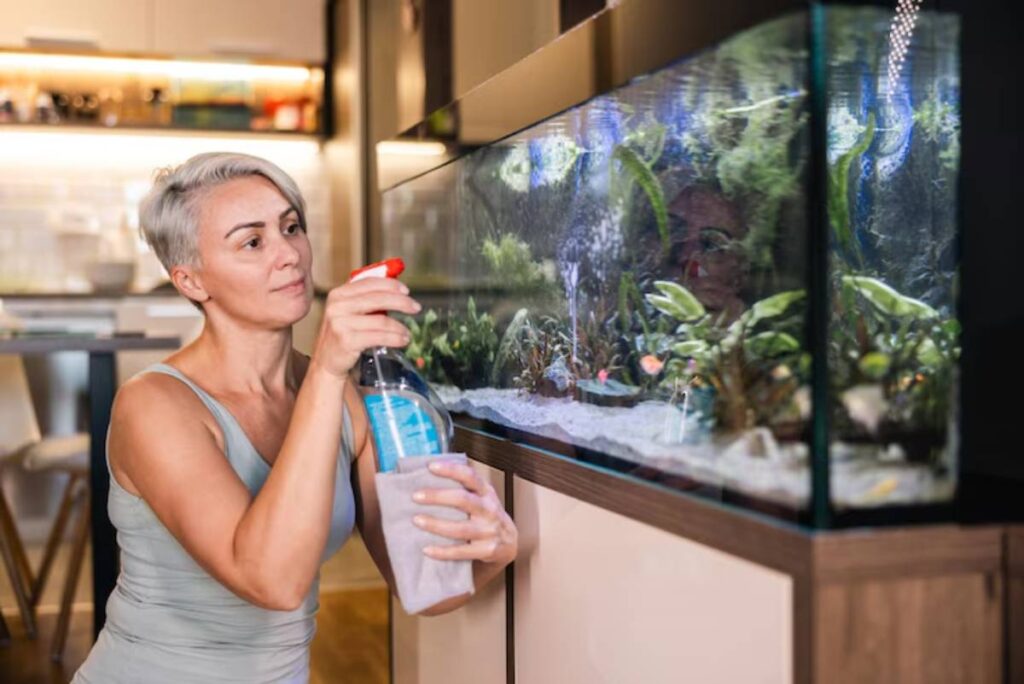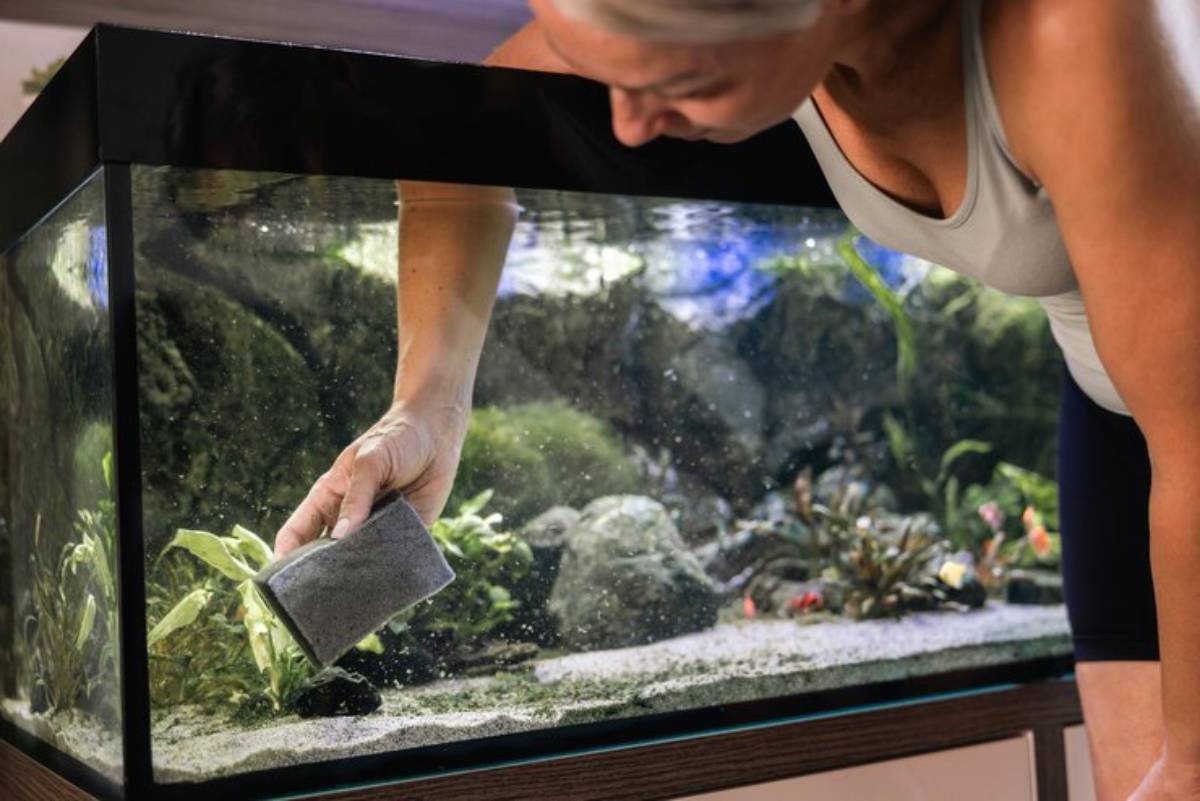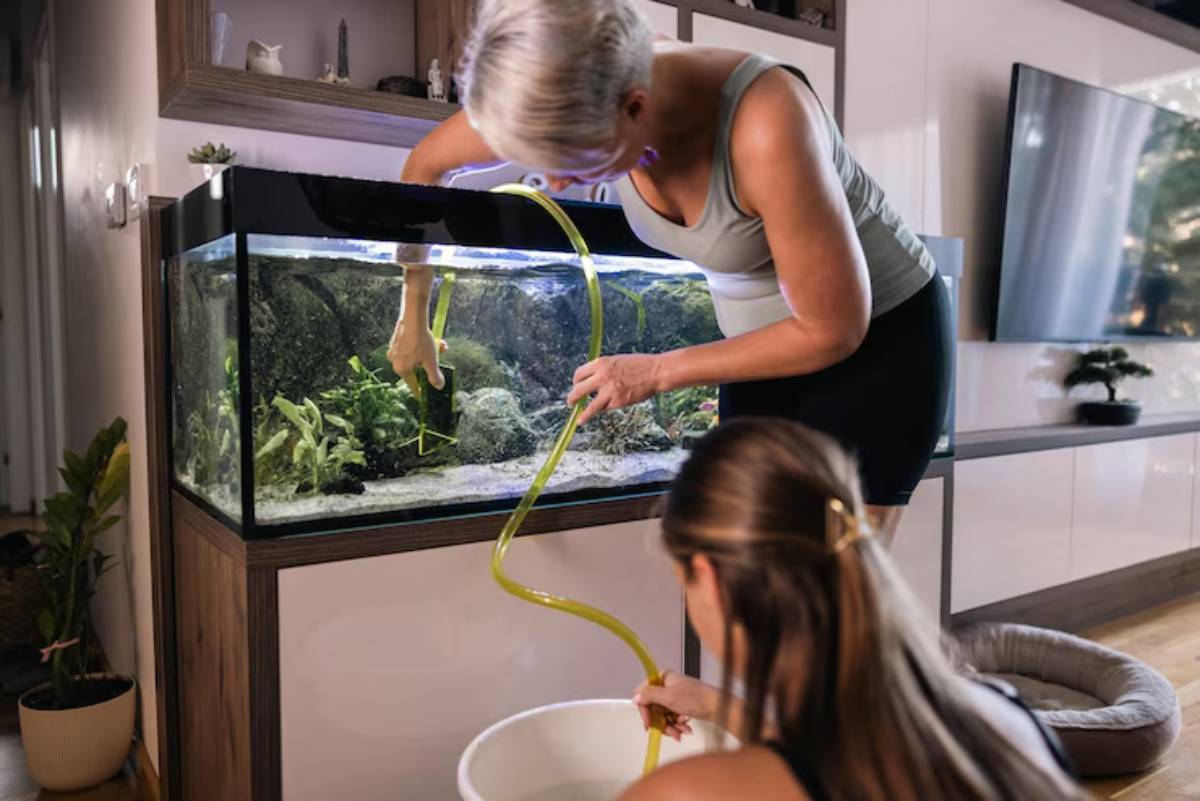The Pets Care Blog

Weekly Aquarium Maintenance Checklist: Keep Your Tank Thriving with Simple Weekly Tasks
Aquariums are more than just beautiful displays — they’re living, breathing ecosystems. And like any environment, they need regular care to stay healthy. Whether you’re a beginner or a seasoned aquarist, having a reliable aquarium maintenance schedule makes all the difference in keeping your fish happy and your water clear.
It’s easy to get overwhelmed when you’re starting out. Do you need to do a full clean every week? How often should you test the water? Which tasks can wait? The good news is that a little weekly attention goes a long way. You don’t need hours — just consistency and the right priorities.
In this guide, we’ll break down your essential fish tank weekly tasks into a checklist that’s simple, efficient, and beginner-friendly. Let’s dive into the habits that keep your aquarium safe, stable, and stress-free for you and your fish.
Why Weekly Maintenance Is Crucial for Aquarium Health
Aquariums are closed systems. Waste doesn’t vanish — it builds. Without regular maintenance, harmful toxins accumulate, algae can bloom, and your fish’s health starts to suffer.
What Weekly Maintenance Prevents:
- Ammonia and nitrite spikes
- Algae overgrowth
- Cloudy water or foul smells
- Stress-related illness in fish
- Filter clogs and equipment failure
Regular care not only keeps your tank clean, it builds trust with your fish, ensures early detection of issues, and reduces the need for major clean-ups later.
Weekly Aquarium Maintenance Checklist
Here’s your no-nonsense breakdown of tasks to do every week.
1. Check the Equipment (5 mins)
- Confirm the heater is holding a stable temperature
- Ensure filters are running smoothly
- Check air stones or pumps for flow
- Look for wear or damage on cords, hoses, or suction cups
A quick visual check now can prevent surprises later.
2. Test the Water Parameters (10 mins)
Use test strips or liquid kits to check for.
- Ammonia
- Nitrite
- Nitrate
- pH
- Hardness (GH/KH)
Record your results in a notebook or app. This helps you spot trends before they become problems.
3. Clean the Glass (5–10 mins)

- Use an algae scraper or magnetic cleaner
- Clean only the inside glass — the outside can wait
- Avoid scraping the substrate or dragging sand up
Glass cleaning keeps your view crystal clear and stops algae from spreading.
4. Partial Water Change (15–20 mins)
- Replace 10–25% of the water
- Use a gravel vacuum to remove debris
- Add dechlorinated water of similar temperature
Changing water refreshes minerals, removes waste, and reduces toxins like nitrate, essential even if your tank looks clean.
5. Rinse Filter Media (if needed, 2–4 weeks)
- Use tank water (not tap!) during water change
- Gently swish to remove excess buildup
- Don’t overclean or replace everything at once
Filter media houses beneficial bacteria. Weekly rinsing isn’t always needed, but peek inside and assess. If the flow is slowing, a gentle clean helps.
6. Wipe Décor and Plants (optional, 10 mins)
- Gently wipe algae from ornaments
- Remove dead plant leaves
- Avoid scrubbing with soap — just rinse with tank water
This task doesn’t need weekly repetition, but include it if algae starts building or the décor looks dirty.
Want to make sure your tank setup is easy to maintain? See our tips for arranging décor for fish safety and aesthetics.
7. Top Off Water (as needed, 2–3 mins)
- Replace evaporated water with dechlorinated water
- Do not confuse this with a water change — topping off doesn’t remove waste
In warmer climates or open tanks, topping up once or twice a week keeps levels steady.
8. Observe Fish and Behaviour (daily if possible)
- Look for signs of stress or illness
- Check for abnormal swimming, clamped fins, or missing fish
- Watch feeding habits
This takes a minute or two during feeding, but it’s your best early warning system.
Optional Weekly Extras
Once your basics are down, consider adding these.
- Trim plants to prevent overgrowth
- Clean light covers for better brightness
- Calibrate heaters seasonally
- Update logs for water parameters or fish notes
Tips to Make Weekly Maintenance Easy
Maintaining a tank shouldn’t be a chore. Here’s how to streamline the process.
Use a Caddy or Toolbox
Store your scraper, test kits, water conditioner, and siphon in one spot.
Automate Where Possible
Use a timer-controlled lighting system to maintain consistency without manual effort.
Want to learn how to automate lighting? Explore timer-controlled lighting: why it helps your tank.
Set a Calendar Reminder
Pick one day a week — “Tank Tuesday” or “Freshwater Friday” — and stick with it.
Involve the Family

Teach kids or partners how to help. It turns a task into a shared hobby.
What Not to Do Weekly
Avoid over-maintenance — it can do more harm than good.
- Don’t clean filters too thoroughly or too often
- Don’t remove all water — it disrupts beneficial bacteria
- Don’t use soap or chemicals in or near the tank
- Don’t replace all filter media at once
Think balance, not sterility. Your tank is a living system, not a sterile display.
What to Expect as a Beginner
At first, this list might feel long. But most weekly routines take 30–45 minutes max, especially once you build muscle memory.
Over time, you’ll develop an eye for what needs attention and what can wait. The goal isn’t perfection — it’s stability.
Conclusion: Build a Habit, Build a Healthy Tank
Keeping a beautiful, thriving aquarium isn’t about expensive gear or flashy setups — it’s about consistency. With a solid weekly aquarium maintenance schedule, you’re not just cleaning. You’re building a healthier, more balanced home for your aquatic pets.
Start small. Stick to the checklist. In a few weeks, it’ll become second nature.
Your tank doesn’t need daily deep dives — it needs you once a week, with purpose. And when your fish swim up to the glass full of colour and curiosity, you’ll know the effort was worth it.









